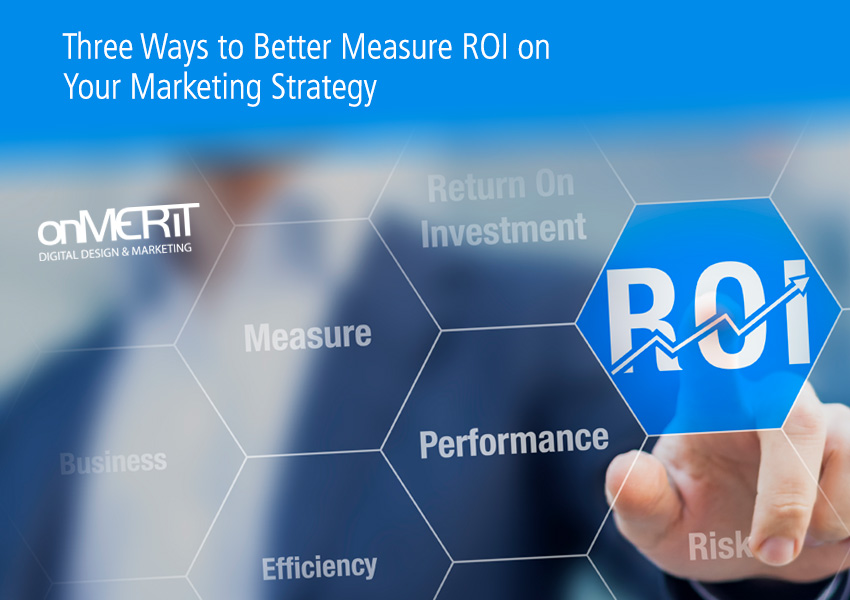While there is no one set “right” way to measure your return on investment with your marketing, it’s not something any business can afford to ignore.
The key is to put in place measures so you have specific, clear data on how exactly your marketing is performing. That way you can adjust and pivot your marketing strategies based on what’s happening in real-time.
To ensure you have an effective process for measuring your marketing ROI you need to start by defining your marketing KPIs.
Your Marketing KPIs
KPI stands for Key Performance Indicator. A KPI is a metric that helps you determine if you’re meeting your goals.
While there are many different things you can track and measure, the KPIs are the items you’ve determined are most important for measuring your success.
KPIs for digital marketing generally fall into three main categories:
- Financial: Marketing is usually intended with the goal of generating more revenue, so figuring out how your strategy impacts your bottom line in a positive way is important. An example of a financial KPI for your marketing would be calculating your cost per lead.
- Social: These are the metrics you use to measure your performance on social media. It’s easy to get all excited about things like your “likes” on Facebook or “mentions” on Twitter, but you need to have some concrete targets in place for things that are more indicative of performance. For Facebook, instead of focusing on “likes” you want to look at things like shares, which show greater engagement from visitors.
- Website performance: Websites are one of the best places to gather data and get insight into consumer behaviors. Website KPIs are typically things like bounce rates, unique visitors and overall traffic.
Now that you know what KPIs are, how do you decide where to focus your efforts?
Here are my recommendations on the three specific ways you can better measure ROI on your marketing strategy:
#1. Website Traffic
It’s not only important to your marketing to know how much traffic is on your site, but you need to know what type of traffic it is. Are people finding your business through Google? Are you getting clicks from social media? Are there other sites consistently referring customers to your site? If so, they could be a potential partner.
The source of your website traffic matters for your marketing strategy because it gives you an indication of where visitors are coming from…and where they are not! Having that knowledge means you can determine where you may need to put more (or less) effort.
Here are the four sources of website traffic that you should look at:
Organic Traffic
These are the people who found your website through an online search. Although Google is the primary search engine people use, organic traffic numbers also include Bing and Yahoo!. To increase your organic search traffic, you need to focus your efforts on Search Engine Optimization (SEO).
Referral Traffic
Visitors who find your site through external links throughout the web are considered referral traffic.
Referral traffic can be fairly simple to increase, because the more links you have on other sites, the more people are likely to click. Your best bet for referral traffic is to focus on getting links on quality, reputable sites that actually want to provide value to their readers.
Social Traffic
Social traffic is made up of people who have come to your site through places like Facebook, LinkedIn or Twitter. As part of your marketing strategy, you’ll want to continually track and measure which social media sites are generating the most traffic so you can adjust your advertising budget to favor the platforms that bring the most people to your site.
Direct Traffic
Direct traffic is exactly what it sounds like: people who directly enter the site into their web browser. These people may already know who you are, either through familiarity or being a repeat visitor. Often this traffic comes through traditional marketing, like brochures or mailers that have your website on them.
#2. Leads
So you have a list or database of leads…awesome! But are those leads actually converting? Anyone can build a list, but the quality of your leads can impact how successful your marketing campaign is.
The first thing you should know about leads are your numbers:
- How many leads are you generating?
- How many leads do you convert?
- How long does it typically take to convert a lead?
Once you have your basic data, then you can start to dive into the types of leads you have and how you can improve your lead quality.
If you don’t already have a list or database, the best place to start is with your website. Ideally, you want to focus on building a “house list” by getting visitors to your website to sign up for emails from you. You can do this by offering a “free gift”in exchange for their emails. Checklists, guides, educational videos or eBooks are popular. Whatever you do, make sure it’s something of high value.
This type of list is most desirable as these leads are already somewhat interested in you and with email marketing you’ll be able to nurture your relationship with them.
As for actually converting leads, the first thing you need is a target. It’s important to have an attainable and realistic goal to be tracking towards, otherwise, how are you going to measure if your marketing strategy is working?
#3. Reach and Reputation
When it comes to marketing, reputation matters. Having your brand be recognizable and well-known can go a long way towards helping your marketing efforts.
Being positioned as a leader in your industry creates trust, and that trust means people are more willing to buy from your organization.
Here are some ways you can help build your brand authority and improve your reach:
- Have a business blog that is regularly updated with fresh content and always respond to any comments you receive.
- Keep all social media profiles updated and be active on a regular basis.
- Do guest spots on other industry blogs or podcasts.
- Start a Youtube channel. You can begin with short videos relevant to your business that show you as an expert.
- Start a podcast. Apple Podcasts and other platforms offer a proven way to reach your audience.
- Sponsor or host an industry event. This is excellent for both networking and gaining visibility for your brand.
Now that you know what types of data you need to be looking at, the question then turns to how to get actually ensure you’re measuring what matters.
Having a clear marketing strategy with KPIs in place for your organization is an essential component for measuring success and should always be in place prior to launching marketing campaigns.
If you don’t already have someone within your business who actually understands the data you need to look at and can extract the important parts you need to help create your strategy, then it’s time to consider hiring an outside consultant.
Using a marketing expert who can get your strategy ironed out and lay the groundwork for future marketing efforts may seem costly at the outset, but with the knowledge and insights you’ll gain, along with the improvements you’ll see on your marketing ROI, it’s an investment well worth considering.
About the Author
Gary is OnMerit Marketing’s owner and blog writer. A Brand Designer and Internet Marketing Specialist, he has a passion for helping small businesses look great and grow their businesses online. Follow Gary on Twitter @onmerit, or Facebook: www.facebook.com/onmeritmarketing




